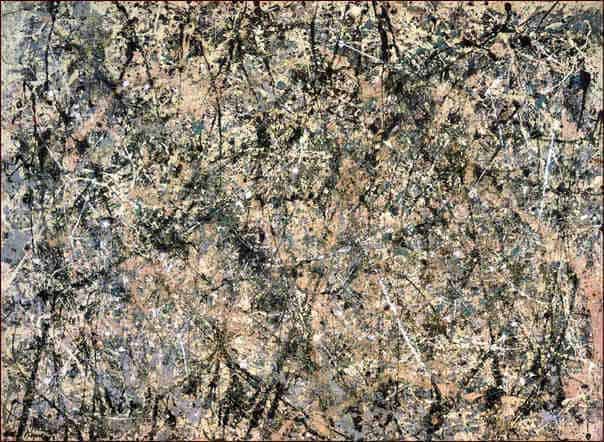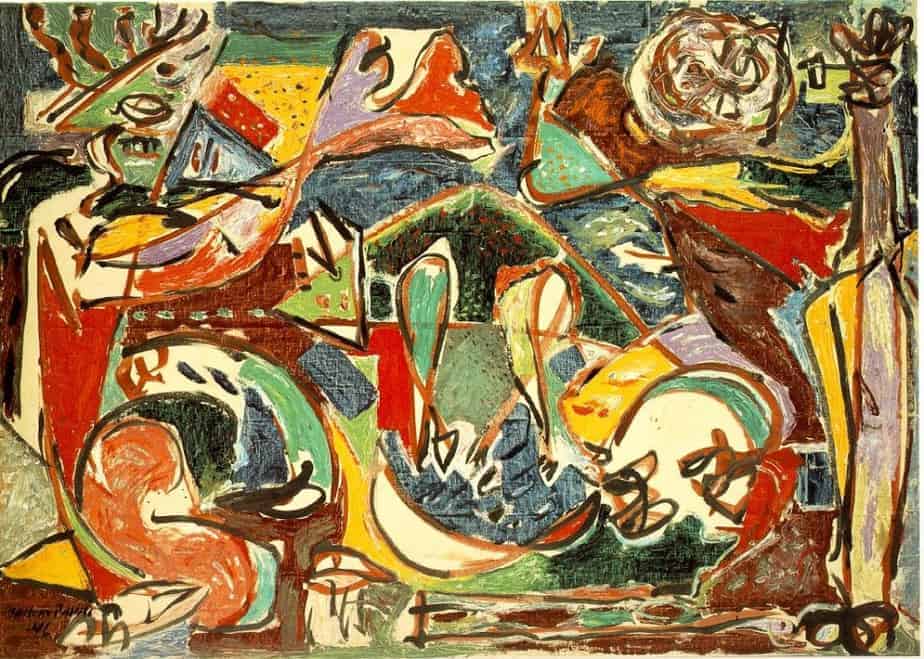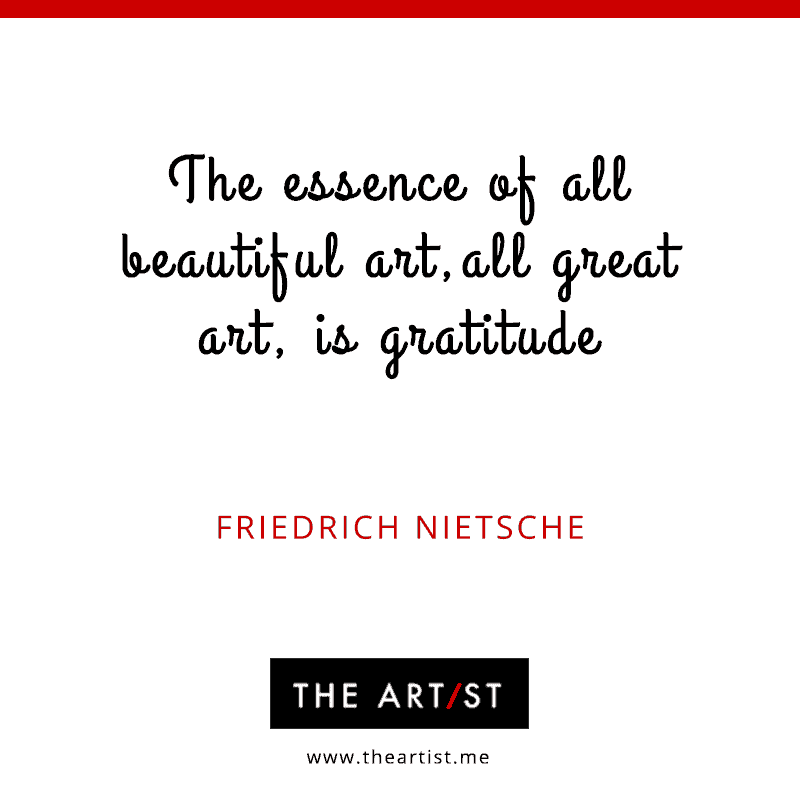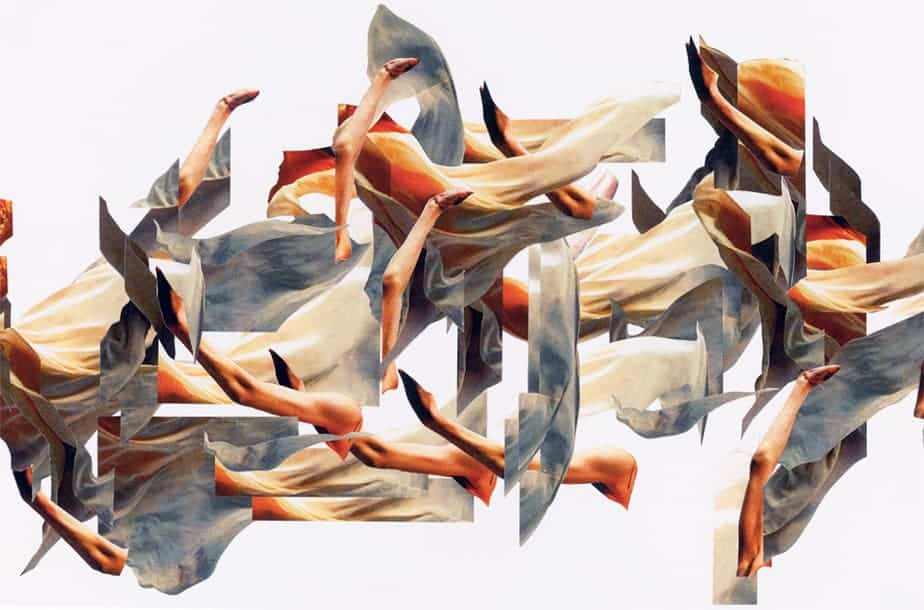Leo Tolstoy could be called a father of abstract expressionism and the expressionist movements of the 19th and 20th centuries. His “Expression Theory” centered on the idea that art elicits and provokes emotion in the viewer. Tolstoy believed that the role of the artist was to provide the viewer with something that would bring out these effects. Abstract Expressionism achieves this by letting the medium and composition communicate for itself. Artists like Pollock believed that it was the viewer (and not the artist) who defines and interprets the meaning of the abstract expressionist artwork thus, there is no relevance on what the artist thinks or conveys while producing the work. So, what is abstract expressionism?
What Is Abstract Expressionism?
Abstract Expressionism is an artistic movement of the mid-20th century comprising diverse styles and techniques and emphasizing especially an artist’s liberty to convey attitudes and emotions through nontraditional and usually nonrepresentational means.
As per MOMA – Abstract Expressionism is a term applied to a movement in American painting that flourished in New York City after World War II, sometimes referred to as the New York School or, more narrowly, as action painting.

The “New York School”, a group of artists including Jackson Pollock, Lee Krasner, and Willem de Kooning, found the movement with a basis on the value of spontaneous movement and expression. Every one of them was talented and expert in traditional and classical styles of execution. Convergence is one of the initial art pieces of abstract expressionism and considered as the bravest action paintings made by Pollock.
Famous paintings of Jackson Pollock

Abstract expressionist value expression over perfection, vitality over finish, fluctuation over repose, the unknown over the known, the veiled over the clear, the individual over society and the inner over the outer
— William C. Seitz, American artist and Art historian
The major participants in this movement are roughly divided into two groups: Gestural Abstraction and Colour Field.
a) Gestural Abstraction
Gestural abstraction is clearly evident in Pollock’s and de Kooning’s works which feature vigorous and spontaneous movement through seemingly chaotic marks. The works were created with intention, but the effect is that of random impulse. Pollock let his moods determine the colour and the direction and location of paint that he splattered on a canvas on the ground. It may looks as though he merely stepped back and threw paint at the canvas, but every movement of the can or brush was done with purpose.

b) Color Field
Color Field painters like Mark Rothko and Clyfford Still literally painted fields of colour onto the canvas. Again, though the effect seems simple, the colours in these works observed by an acute audience are made up of several hues that gave them depth and candor to the work.
Beginnings of Abstract Expressionism
The end of WWII had to vary after-effects in the psyche of the American public. The years before the war had been fraught with economic depression. Soldiers returning home from the war had seen horrible destruction, genocide, and atrocities they couldn’t bear to discuss or to contemplate. Women who had been in the workforce and had grown independent and self-sufficient were again donning the mantle of domesticity. The country was putting on a brave face while privately suffering an undercurrent of an identity crisis.
In integrated cultural areas like New York where free thought and intellectualism had always flourished, artists, poets, and other freethinkers were becoming paranoid. The government was increasingly more anti-communistic and society was becoming more homogenized. The artists needed an outlet – A creative outlet to express freely!

Abstract Expressionism provided a way for artists of all types to deliver feelings and ideas without the worry of public scrutiny of those thoughts. Of course, the public was reticent to accept their works as art, but that did not impede the movement’s freedom of expression.
Forward thinking and powerful collectors like Peggy Guggenheim gave the movement a wider audience and legitimacy so that the movement could grow and evolve into what it is today. Because of careful curation and a respect for the founding artists of the movement, we are still able to enjoy these works.
Features of Abstract Expressionism
Large Scaled Works
Paintings are typically large except in the case of heroic figures of the 18th and 19th Abstract Expressionism and is typically completed on very large canvases or is comprised of multiple canvases meant to be one work.
Artist’s perspective
The movement is not characterized by any one specific style, but strong messages and emotions are paramount to the representation. In any Abstract Expressionist work, it is either the feeling of the artist or of the viewer is in the center stage – not the image itself.
Inspired by Surrealism
Abstract Expressionism takes from Surrealism and delivers the idea that art should be created by spontaneous and subconscious creation. Rather than planning out, sketching, and rendering a piece, the artist follows the flow of feeling and the openness of his mind to create.
Motivation
The era in which the movement began had put a strain on society, especially that of free thinkers, that was stifling and limiting. Abstract Expressionism gave artists an outlet for their pent-up thoughts and feelings.
Diversity of Colour
Because Abstract Expressionism had no intention of rendering an image of something tangible, experimentation with colour took on a cerebral element. The artists became interested in how color affected mood and thought.
Conclusion
Regardless of the critic’s viewpoints on that subject, irrespective of the rational definitions of art, the Abstract Expressionists achieved Tolstoy’s ideal and went beyond it to an extent where it helped the viewers to explore thought-provoking ideas about religion, time, space, popular culture, and more.
Abstract Expressionism delivers!


